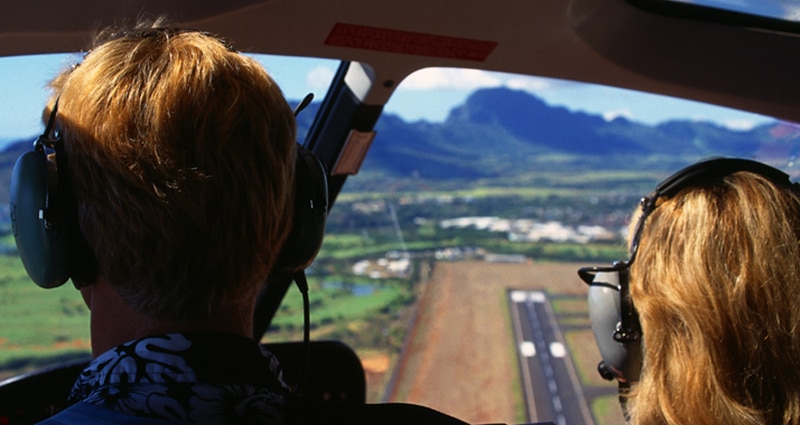Instructor Diversity: Is it Good for You?

Within the aviation community, no two pilots are alike. Each has strengths and weaknesses, good and not-so-good techniques, and their own combination of skills, experience, and instinct. Which pilot is better? To quote Gordo Cooper in The Right Stuff, “Who’s the best pilot you ever saw? Well, you’re looking at him!” pretty much answers that question.
No two instructors are exactly the same either. Each has different strengths and weaknesses that highlight the diversity of their own flying and instructing experiences, and that’s exactly why it’s important to vary the instructors with whom you train. It’s important to glean the valuable lessons that only training with a variety of instructors can bring to you. Even the FAA agrees that pilot diversity is important with a primary focus on experience that is directly relevant to the needs and goals of the training pilot.1 A diverse instructor cadre helps to validate that you are getting the best training you can and ensures robust skills development.
Flying with instructors who have a wide experience base also broadens your horizons to the different types of aviation that exist. Each instructor brings a wealth of experience specific to his or her background. You may fly with a former military pilot who has a determined intensity after consistently returning to an aircraft carrier in the middle of the night after combat missions. Maybe you are learning from an Alaskan bush pilot who truly understands what it means to hug the mountains in low visibility, extremely low temperatures, and high elevation. Either would work, along with myriad others who have unique experiences in aviation.
If your instructor comes from a military background, they developed their skills in an environment of very strict discipline. They learned early that not only can their life depend on doing things a specific way, but that squadron mates’ lives – or the lives of troops on the ground – may hang in the balance as well. Of course not everyone needs to train in this type of environment, but having an instructor with a military background can definitely complement your training.
But, maybe this type of intensity is not right for you and you would prefer the experience of someone who has released jumpers out the back of an airplane? There’s an instructor out there who can teach you to be on your line, on altitude, on time, to flip the light to green, bring the flaps all the way down, and crack the throttle back to on speed for those tumbling out of your airplane. And then, that instructor can teach you to race the jumpers (safely, of course) to the ground to get the next load.
Maybe instead you have your eyes set on flying for the airlines or a sweet corporate gig taking the C-codes all around the globe. Maybe your passion is teaching new young aviators for a living, or maybe even working for the FAA as an inspector!
There are so many different types of instructors out there. Every one of them has a story, and (if they are a good instructor!) a commitment to impart what they know to every student. “The most important questions to ask when choosing an instructor are not the ones you ask the instructor; they’re the ones you ask yourself after an introductory meeting or demo flight with the potential instructor.”2 If you are not getting what you need from your current training environment, something has to change.
Another significant point is that even the worst instructor can give you new insight. There are instructors who, through poor example, showed you what not to do with an airplane. You may have said to yourself, “I will never respond to my students or other pilots the way that instructor did.” There are lessons to be learned from every instructor out there; hopefully most of them are good ones!
So, don’t limit yourself to just one instructor. Fly with different people, in different airplanes, in different environments. Get your glider rating! Learn to fly a seaplane or get upset prevention and recovery training. Always push yourself to learn something from every instructor with whom you fly. Experience is an excellent teacher, but it doesn’t always have to be your own personal experience. Learn from the wealth of experience that a diverse instructor cadre brings. That experience might just save your life.
References
1 Best Practices for Mentoring in Flight Instruction. (2016, January 20). Retrieved November 29, 2017, from https://www.faa.gov/training_testing/training/media/mentoring_best_practices.pdf
2 Bergqvist, P. (2012, March 2). Flight Instructors: Finding One That Soars. Flying Magazine. Retrieved November 29, 2017, from: https://www.flyingmag.com/training/learn-fly/flight-school-finding-right-instructor

Prevailance Aerospace is a UPRT provider that has been working with corporate, government, and general aviation pilots to improve safety in the aviation industry. Prevailance Aerospace uses Extra 300 Series Aircraft for training and our pilots are experienced aviation professionals from various military and general aviation backgrounds. We know that successful aviation endeavors are accomplished through an uncompromising commitment to safety, impeccable professionalism, tremendous attention to detail, and constant improvement.
http://prevailanceaerospace.com
© 2024 Prevailance Aerospace. All Rights Reserved.
Next ArticleRelated Posts

Understanding the Challenge of Turbulence-Related Injuries in Business Aviation
The challenge of managing air turbulence in business and private aviation is becoming increasingly evident due to the growing number of turbulence-related incidents affecting aircraft operators across the industry.

Leadership, Management and Safety: Embracing Compliance and Conformance Oversight
Aviation operations, and by default, safety, are based on the idea that regulatory requirements are fundamental to establishing a framework to achieve safe operations.

